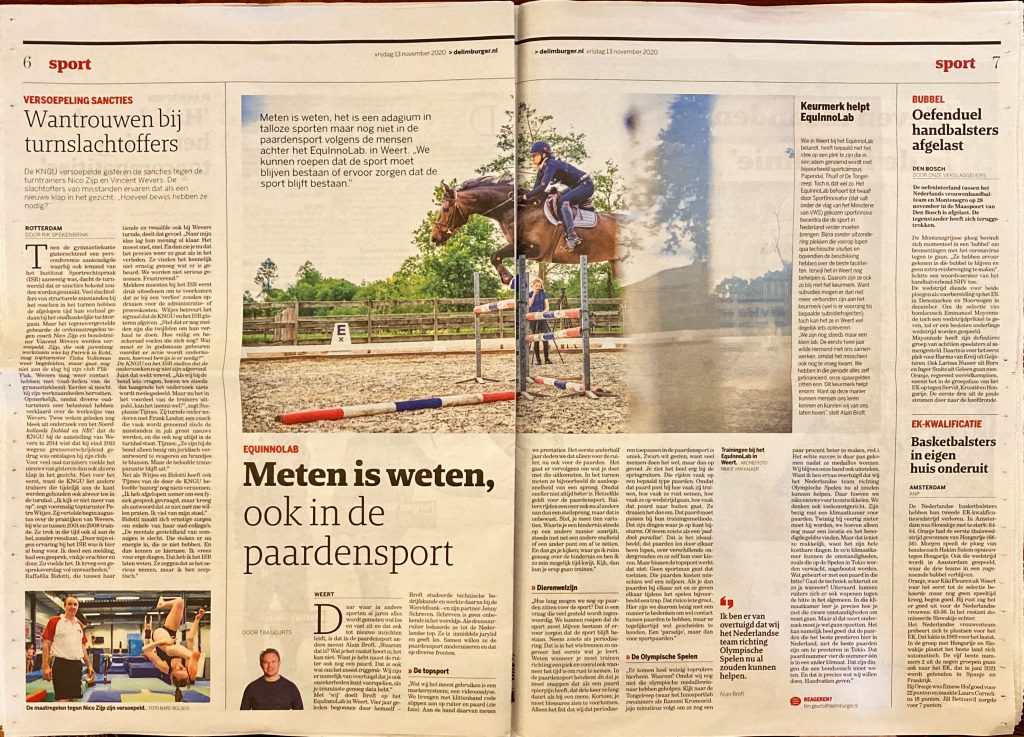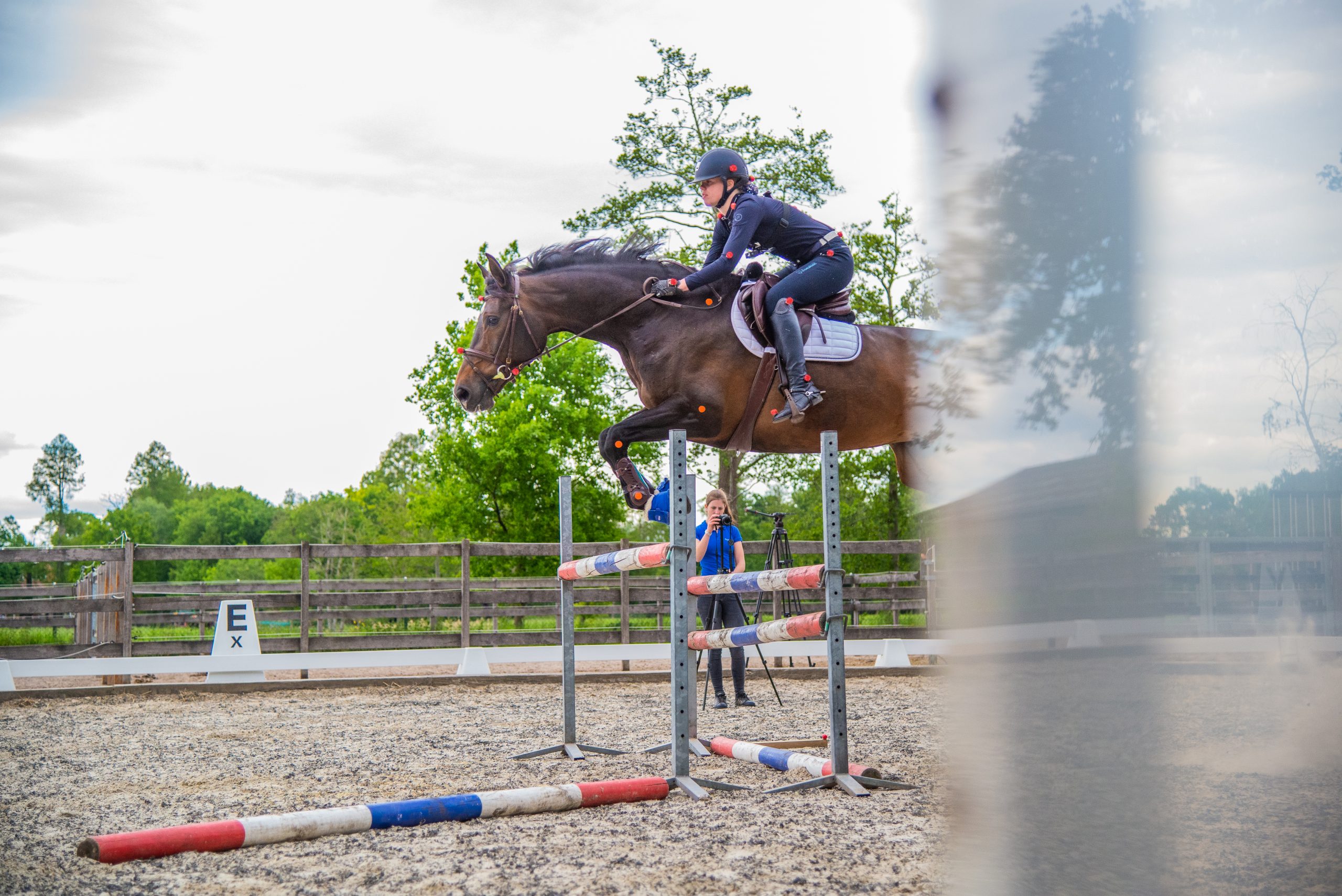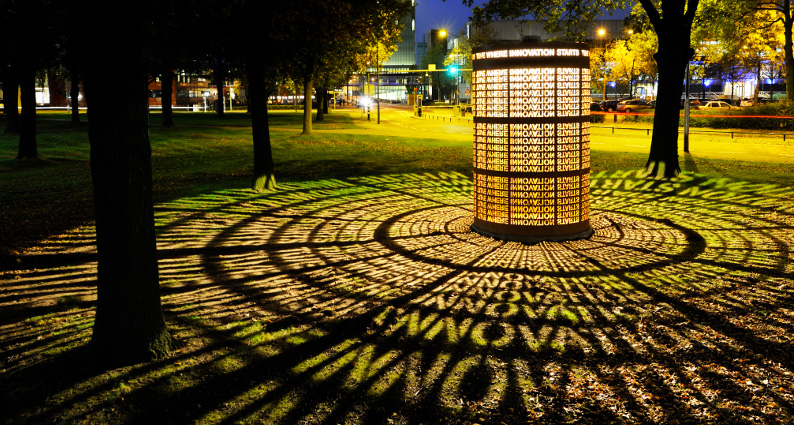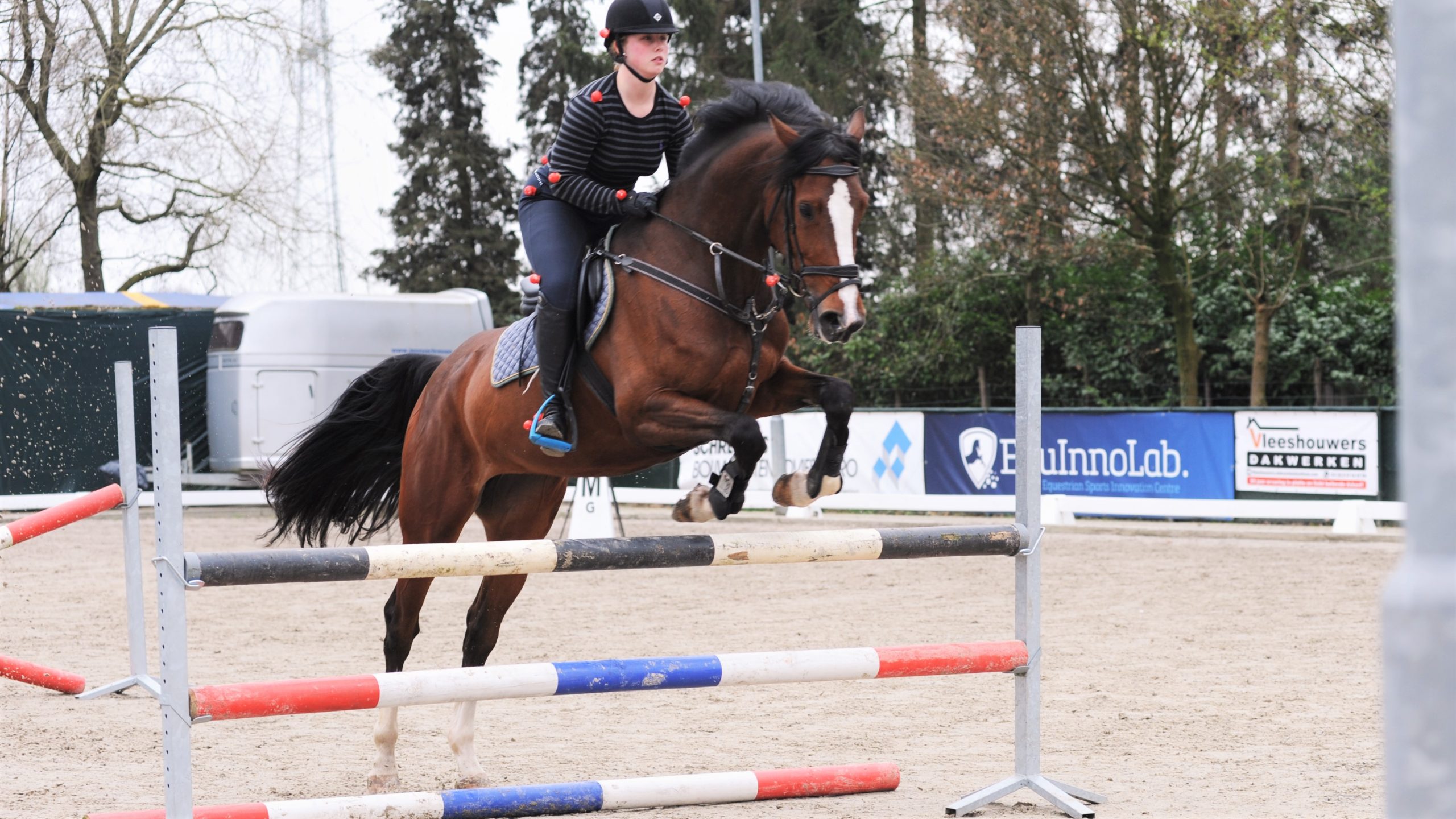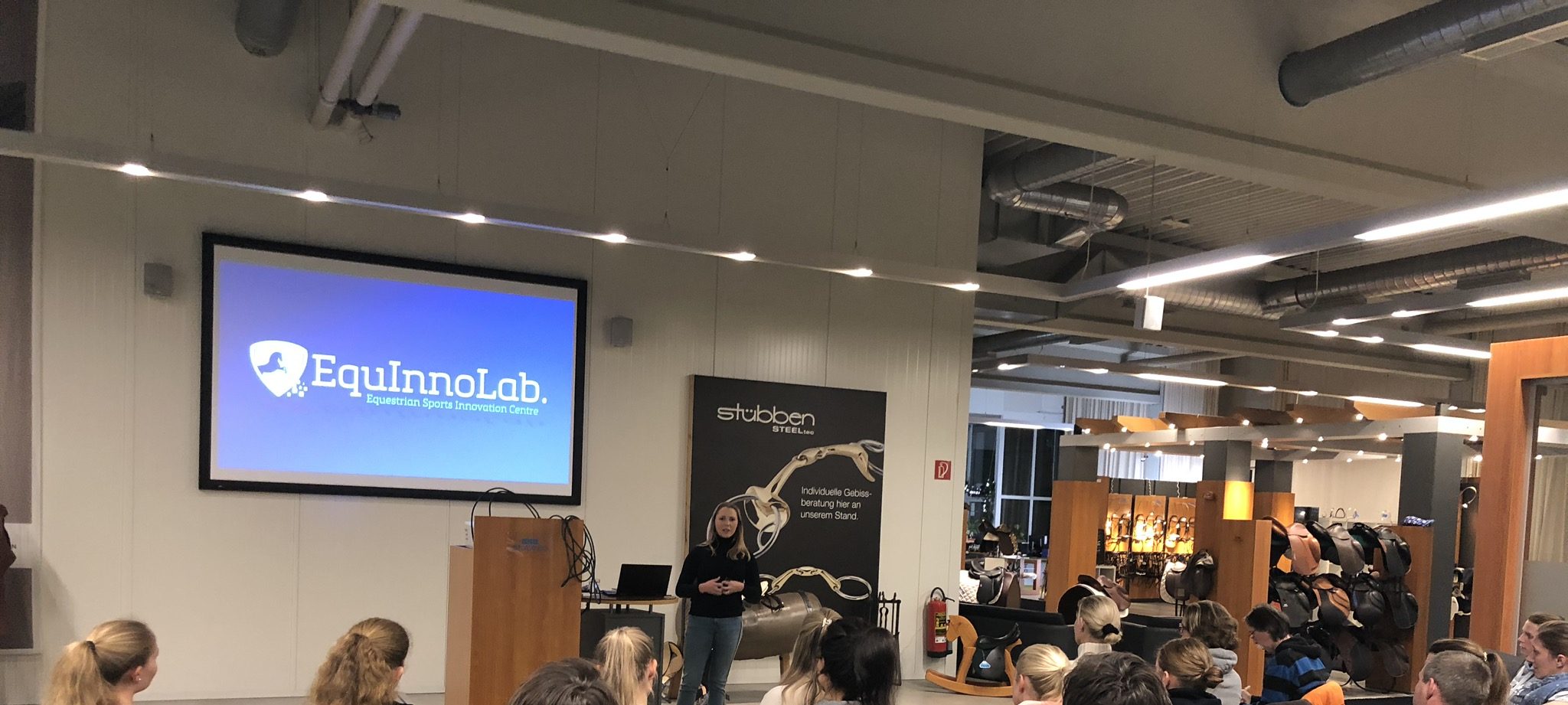Measuring is knowing, it is an adage in countless sports but not yet in equestrian sports according to the people behind the EquInnoLab. in Weert. "We can shout that the sport should continue to exist or ensure that the sport continues to exist"
Where in other sports everything that is loose and stuck has been measured for years and that also leads to new insights, it is different in equestrian sports believes Alain Broft. "Why is that? What you hear most often is: it can't be done. Because besides the rider you also have a horse. That is also what triggered us the most. Because we are convinced that you can also predict uncertainties, at least if you have enough data."
With we, Broft is referring to the EquInnoLab in Weert. Started four years ago by himself - Broft studied technical business administration and then worked at the World Bank - and his partner Jenny Schreven. Schreven is no stranger to the world. As a dressage rider she belonged to the Dutch top. She is now a judge and teaches. Together they want to modernize equestrian sports on various fronts.
The top sport
"What we use the most is a marker system; a video analysis. We apply red dots to rider and horse with Velcro (see photo). Based on that we measure performance. The first year and a half we only did that for the rider, now we do that for the horses as well. It is then a matter of what you do with the results. In gymnastics, for example, they measure the approach speed of a jump. Because faster is not always better. The same goes for equestrian sports. Riders already approach an oxer differently to a steep jump, but that is subconscious. Suppose you measure ten variations. In which you approach an obstacle in a different way each time, with just a different speed or a different point to set off. And then you start looking at where I can cross the obstacle well enough to spend as little time as possible. Look, then you can start training on it."
Animal Welfare
"How long can we sit on horses for sport? That's a question that gets asked a lot these days. We can shout that the sport should continue to exist or make sure that the sport continues to exist. Take something like periodization. In cycling, that's pretty much the first thing you learn. Knowing when to train towards the peak and especially when it's time to take a rest. In equestrian sports, this means understanding that if a horse has muscle pain, it lasts three times as long as a human. In short; you have to prevent injuries. The fact that we apply periodization in equestrian sports is unique. In black and white terms, because many people do it, but then by feeling. You see it very much in the jumpers. They often ride a certain type of horse. Because that horse matches how often they train, how often they rest, how often they compete, how often that horse goes outside. So they turn it around. That horse has to fit their training method. Those are things you can adjust for. Or take something like a 'paddock paradise'. That's the ideal image; that horses run loose through each other, over different surfaces and they choose their own feed. But within top sport that doesn't work. No sportsman is going to allow that. Those horses might cost a million. If you then put horses together and they kick each other while playing, for example. That risk is too great. So here we are trying to think of a way to have contact between horses, but at the same time keep them separated. A 'paradise', but for sport horses."
The Olympics
"Very few top riders come here. Why? Because we haven't helped that Olympic medalist yet. Look at the Tongelreep (where the Innosportlab meticulously follows swimmers like Ranomi Kromowidjojo to make them a few percent better, ed.). The real success there only came after they won medals. We continue to hold out our hand as well. Because I am convinced that we could already help the Dutch team towards the Olympics. We don't have to develop anything new for that. We also think with the future in mind. We are working on a climate chamber for horses. We just need to find a location and the necessary money. But that is not so easy, because these things are very expensive. In such a climate chamber, the conditions expected at the Tokyo Games can be simulated. What happens to a horse in that heat? Does the technique deteriorate and when? Of course, riders can also arm themselves against the heat in general. In the climate chamber you learn exactly how to deal with those tough conditions. But all that kind of research has to be set up. It could well be that the horses that perform best here in the Netherlands are not the best horses to perform in Tokyo. That horse number four is number one in a different climate. These are things that a national coach must know. And that's exactly what we want to do. Give handles."
Hallmark helps EquInnoLab
Anyone who ends up at the EquInnoLab in Weert will certainly not have the impression that they are at a place that is mentioned in the same breath as, for example, sports campus Papendal, Thialf or De Tongelreep. Yet that is the case. The EquInnoLab is one of twelve sports innovation centers chosen by SportInnovator (which falls under the flag of the Ministry of Health, Welfare and Sport) to advance sport in the Netherlands. Almost without exception, these centers are at the forefront of technical innovations and have access to the best facilities, whereas Weert is still struggling. That is why they are so happy with the quality mark. Subsidies may no longer be linked to the hallmark (although there is priority in certain subsidy processes), but in Weert they can still get something out of it. "We are still only a small lab. The first two years nobody wanted to work with us because it was perhaps too early. We financed everything ourselves during that period, our savings are in it. This seal of approval helps tremendously. This way people can get to know us and we can make ourselves heard.", states Alain Broft
By Tim Geurts: https://www.limburger.nl/cnt/dmf20201112_98136889
